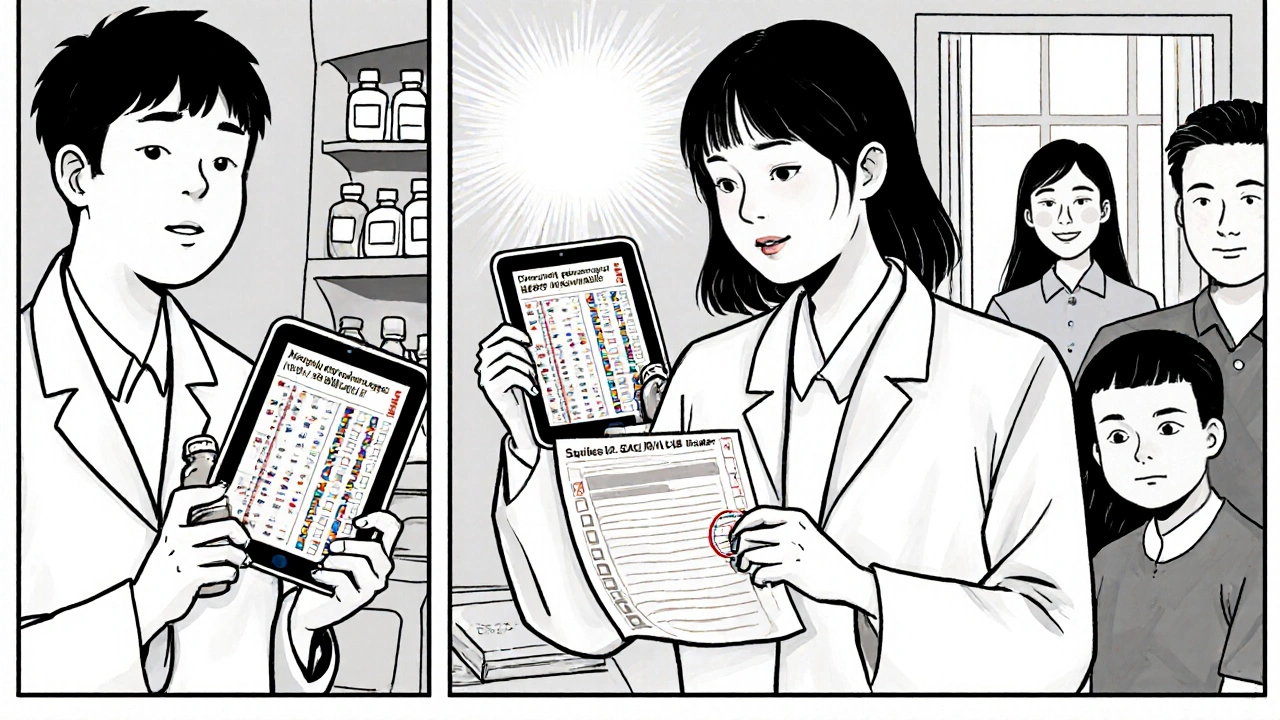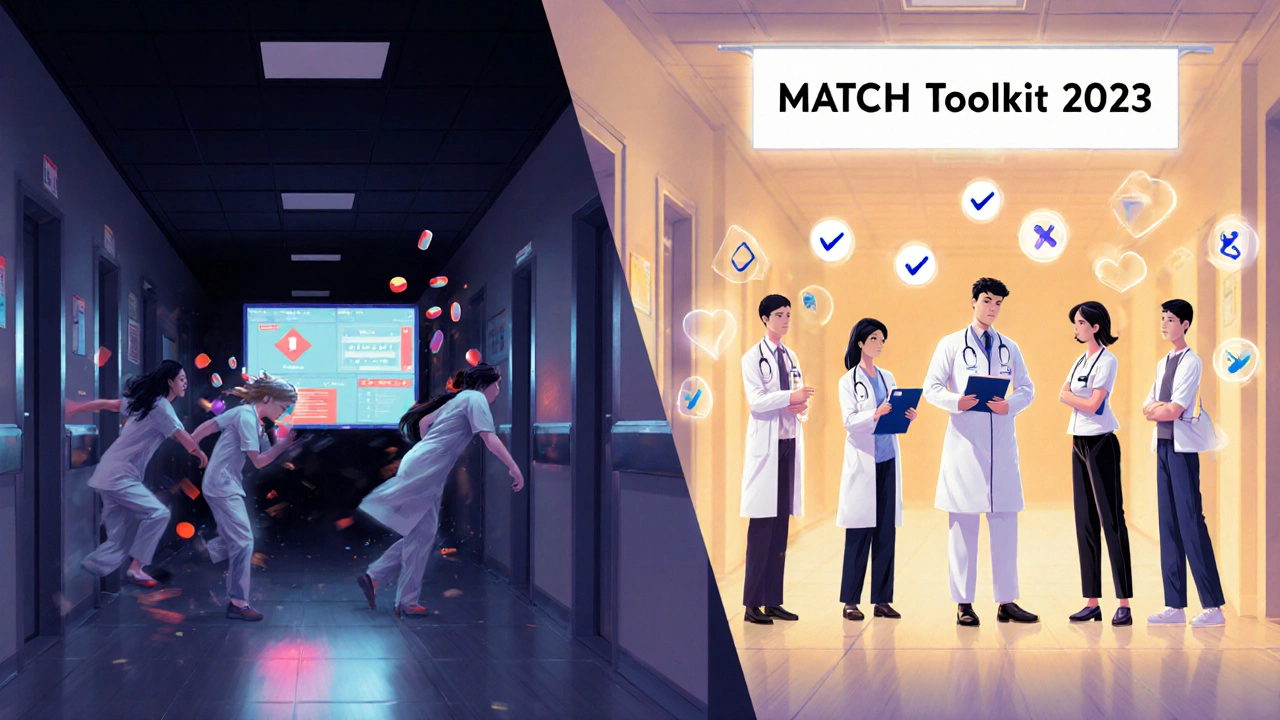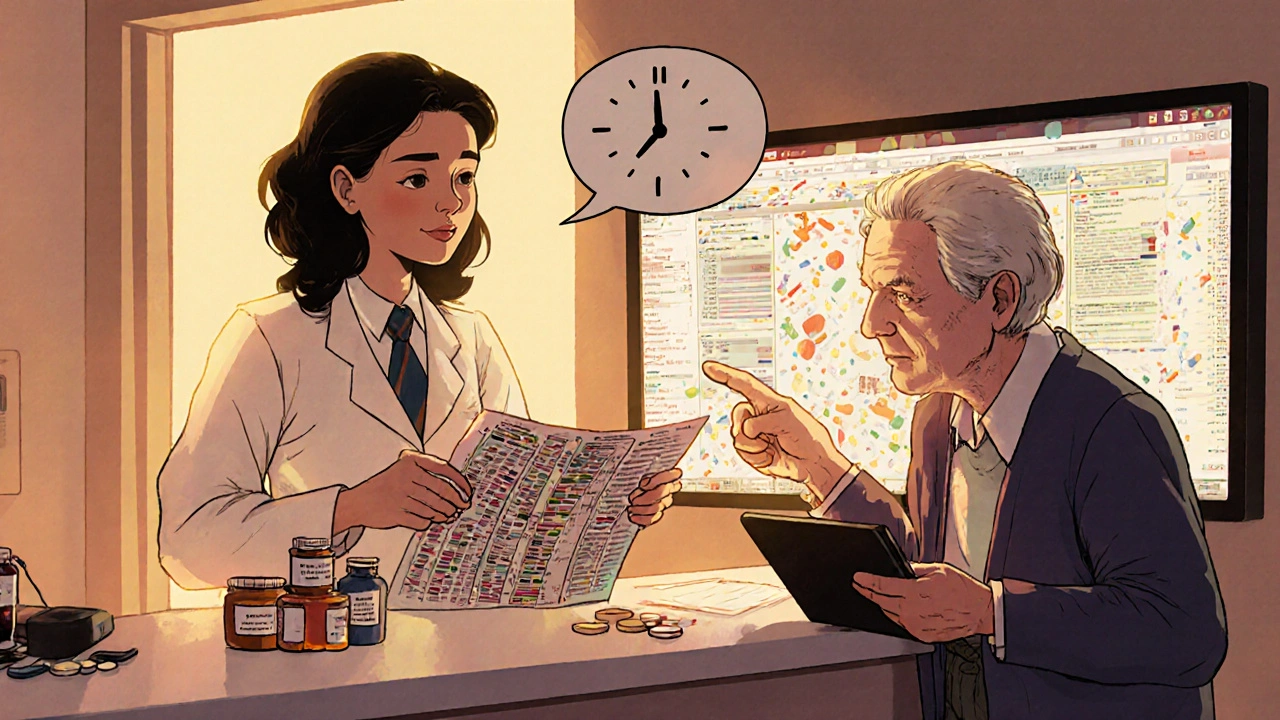Every year, hundreds of thousands of patients in the U.S. are harmed because their medications don’t get properly tracked when they move from hospital to home, or from one doctor to another. These aren’t rare mistakes-they’re predictable, preventable, and happening far too often. The truth is, medication reconciliation isn’t just a box to check during discharge. It’s the most powerful tool we have to stop dangerous errors before they happen.
Why Medication Errors Happen During Transitions
When a patient leaves the hospital, gets moved to a rehab center, or switches from an emergency room to a primary care clinic, their medication list often gets lost in the shuffle. One study found that 60% of all medication errors occur during these handoffs. That means if you’re discharged with five new prescriptions and three old ones, there’s a very real chance your new doctor doesn’t know you’re already taking two of those same drugs. Or worse-you’re given a new blood thinner that clashes with one you’ve been on for years. The problem isn’t always bad technology. It’s broken communication. A 2023 survey by The Joint Commission showed only 28% of healthcare facilities consistently involve patients in reviewing their own medication lists. And even when systems are in place, staff often skip steps because they’re rushed. One resident from Massachusetts General Hospital reported that her hospital’s EHR reconciliation tool adds 12 to 15 minutes per patient during admission-time most teams don’t have. So they take shortcuts. And shortcuts cost lives.The Four Steps of Real Medication Reconciliation
Medication reconciliation isn’t just pulling up a list from a computer. It’s a four-step process that must be done right every single time:- Create the most accurate list possible of what the patient is actually taking right now. This means asking the patient, checking pill bottles, calling pharmacies, and reviewing old records-not just trusting what’s in the EHR.
- Build a new list of what the patient should be taking after discharge or transfer. This includes new prescriptions, changes to doses, and medications that should be stopped.
- Compare the two lists side by side. Look for duplicates, missing drugs, incorrect doses, and dangerous interactions.
- Make clinical decisions based on that comparison. If there’s a conflict, talk to the prescriber. If something’s unclear, don’t guess-ask the patient or their caregiver.
Technology Helps-But Only If Used Right
Electronic health records (EHRs), computerized order entry systems, and barcode scanning have cut medication errors by nearly half in hospitals, according to a 2022 Cochrane review. But they’re not magic. In fact, when EHRs are poorly implemented, they can make things worse. The MARQUIS study found that during the first six months after a new EHR launch, medication discrepancies actually went up by 18%. Why? Because systems don’t talk to each other. Only 37% of U.S. hospitals can electronically share medication data with community pharmacies. That means pharmacists often have to call each pharmacy manually-68% of them say this is their biggest frustration. And even when data flows, it’s often outdated. A patient might have stopped a blood pressure pill two weeks ago, but the hospital system still shows it as active. The best solution isn’t just better tech-it’s better processes. The AHRQ’s MATCH toolkit, updated in 2023, gives hospitals 159 specific steps to fix this. Hospitals that used all the recommendations saw a 63% drop in errors. Those that only upgraded their EHRs? Just 41%. The difference? MATCH doesn’t just add software-it changes how people work.
Pharmacists Are the Secret Weapon
The most effective way to prevent errors at discharge? Put a pharmacist in charge. A 2023 study in the Journal of the American Pharmacists Association found that when pharmacists lead medication reconciliation during discharge, post-discharge errors drop by 57%. Hospital readmissions fall by 38% within 30 days. Pharmacists don’t just check lists-they ask questions. They find out if the patient can afford the meds. If they understand why they’re taking them. If they’re already taking something similar at home. One pharmacist told me: “Catching a duplicate anticoagulant order that would’ve caused a major bleed is why I do this work.” The American Society of Health-System Pharmacists (ASHP) now recommends that every hospital have dedicated transition pharmacists. Facilities that do see 53% fewer adverse drug events. Yet most hospitals still treat reconciliation as a nursing task, not a clinical specialty.What Patients Can Do
You can’t wait for the system to fix itself. If you’re being discharged, bring your own list. Write down every pill, patch, inhaler, and supplement you take-including doses and times. Bring the actual bottles if you can. Don’t assume the hospital has it right. Ask these three questions before you leave:- “What medications am I supposed to be taking now?”
- “Which ones should I stop?”
- “What should I do if I feel worse or have side effects?”

Implementation Is Hard-But Worth It
Getting this right takes time, money, and culture change. Most hospitals need 6 to 9 months to roll out a solid program. The MATCH toolkit recommends 12 steps, including:- Defining clear roles-who does what? (Nurses? Pharmacists? Doctors?)
- Training staff not just on the system, but on how to talk to patients
- Embedding reconciliation into existing workflows, not adding new ones
- Allocating 15-20 minutes per patient for full review (most only get 8-10)
What’s Changing in 2025
The National Patient Safety Goals for 2025, released in December 2024, are tightening the rules. Now, for high-risk medications like blood thinners or insulin, you must verify the list with at least two sources-not just the EHR. That means a pharmacist must confirm with the patient and a community pharmacy. The World Health Organization’s Phase 2 of “Medication Without Harm,” launched in October 2024, sets a new global target: reduce medication-related harm by 30% in high-risk transitions by 2027. And AI tools are starting to help. MedWise Transition, cleared by the FDA in August 2024, cut discrepancies by 41% in a 12-hospital pilot by flagging interactions and dose errors automatically. The numbers tell the story: full implementation could prevent 800,000 medication errors in the U.S. each year-and save $2.1 billion. That’s not just a cost issue. It’s a patient safety issue.Final Thought: It’s Not About Technology. It’s About Care.
Medication errors during transitions aren’t caused by bad people. They’re caused by broken systems, rushed staff, and poor communication. Fixing them isn’t about buying the fanciest EHR. It’s about giving people the time, training, and trust to do the right thing. The patient walking out the door doesn’t care if your system is certified or your software is new. They care that they go home with the right pills, in the right doses, with no surprises. That’s what matters. And that’s what we can fix-if we choose to.What is medication reconciliation?
Medication reconciliation is the process of creating the most accurate list possible of a patient’s current medications and comparing it to new orders during transitions like admission, transfer, or discharge. It involves checking for duplicates, missing drugs, incorrect doses, and dangerous interactions to prevent harm.
Why do medication errors happen most often during discharge?
Discharge is a high-risk moment because multiple providers are involved, communication breaks down, and patients often leave with new prescriptions that don’t match what they were taking before. Studies show 60% of medication errors occur during care transitions, with discharge being the most common point of failure.
Can electronic health records (EHRs) prevent medication errors?
EHRs can reduce errors by up to 32% when used correctly, but they can also increase discrepancies by 18% if poorly implemented. The biggest issue is poor interoperability-only 37% of U.S. hospitals can share medication data electronically with community pharmacies. Technology helps, but only if it’s part of a solid process.
What role do pharmacists play in preventing errors?
Pharmacists are the most effective frontline defense. When they lead reconciliation during discharge, post-discharge medication errors drop by 57% and hospital readmissions fall by 38%. They catch dangerous interactions, confirm doses with patients, and ensure prescriptions match what’s actually being taken at home.
How can patients protect themselves during care transitions?
Patients should bring a complete list of all medications-including supplements and over-the-counter drugs-along with the actual pill bottles. Ask three key questions: What meds am I supposed to take now? Which ones should I stop? What should I do if I feel worse? Being involved increases confidence and reduces mistakes.
Is medication reconciliation required by law?
Yes. The Joint Commission requires medication reconciliation at admission, transfer, and discharge as part of its National Patient Safety Goals. Medicare and Medicaid (CMS) can reduce hospital payments by 0.5% to 1.5% for non-compliance. Similar rules exist in Australia and the European Union.
What are the biggest challenges in implementing medication reconciliation?
The top challenges are: lack of time (most staff only get 8-10 minutes per patient), poor communication between hospitals and community pharmacies, physician resistance, and EHR systems that don’t talk to each other. Training staff without clear roles can even make things worse-adding 15% more harmful discrepancies.
How long does it take to implement a successful medication reconciliation program?
Most organizations need 6 to 9 months to fully implement a strong program. The AHRQ MATCH toolkit recommends a 12-step process that includes defining roles, training staff, integrating with existing workflows, and ensuring pharmacist involvement. Quick fixes rarely work-lasting change requires system-wide commitment.

this is so real. i had my grandma almost get double-dosed on warfarin because the hospital didn't check her pill bottles. she's fine now, but it was terrifying. why do we still treat this like paperwork and not life-or-death?